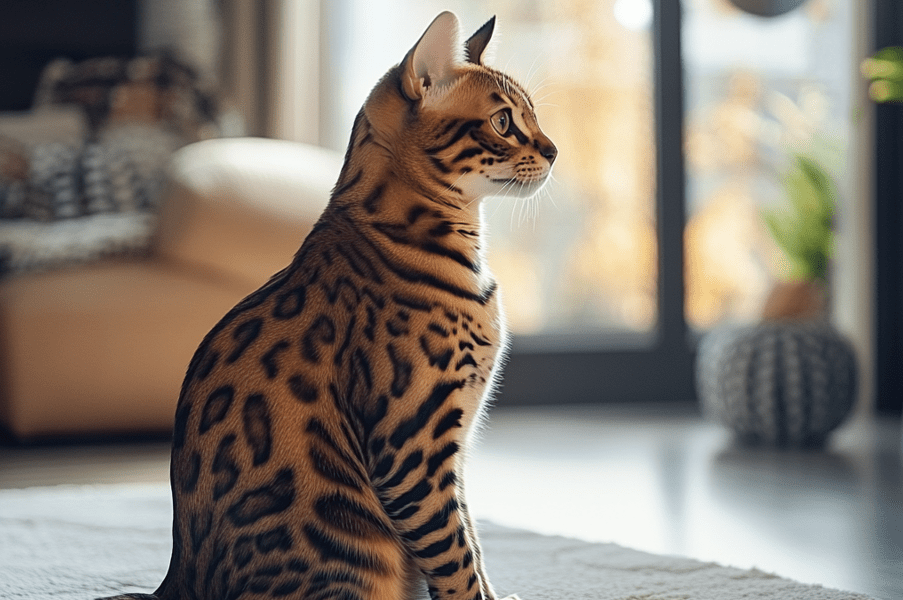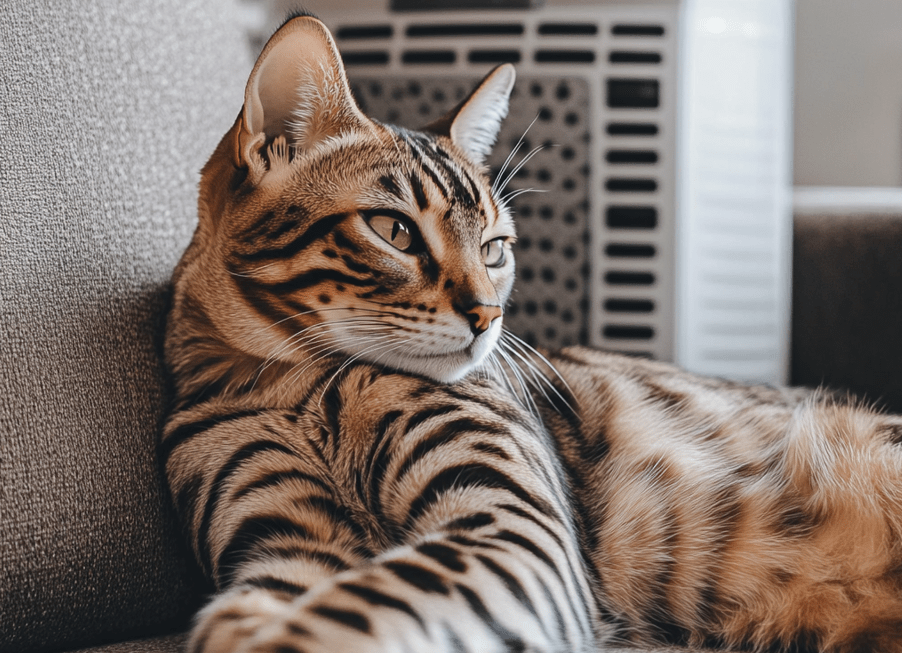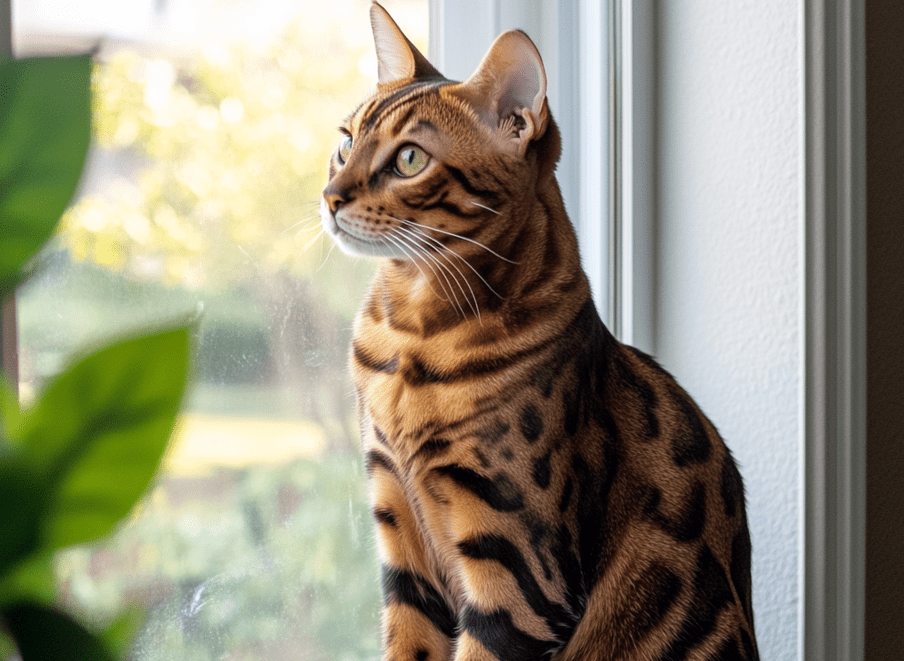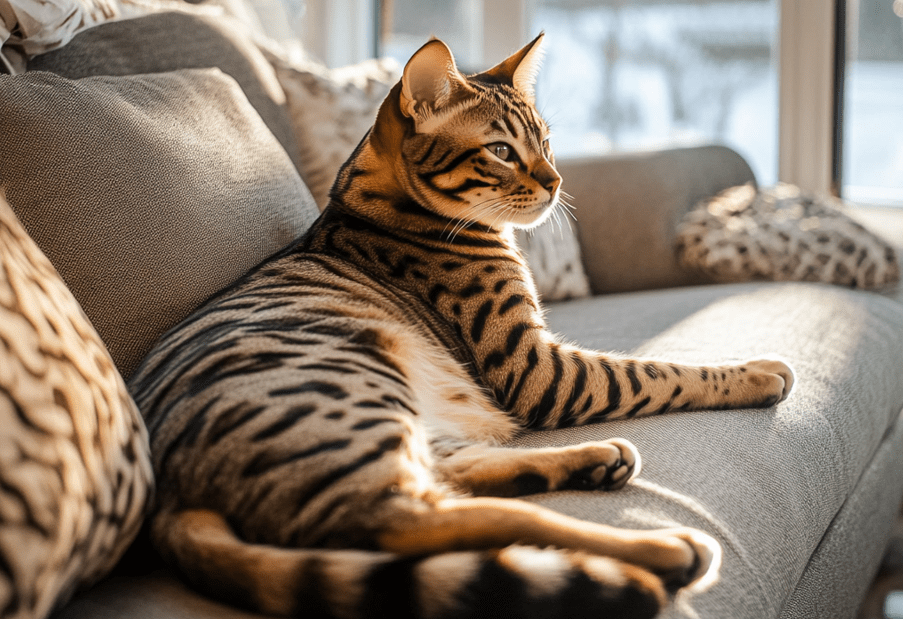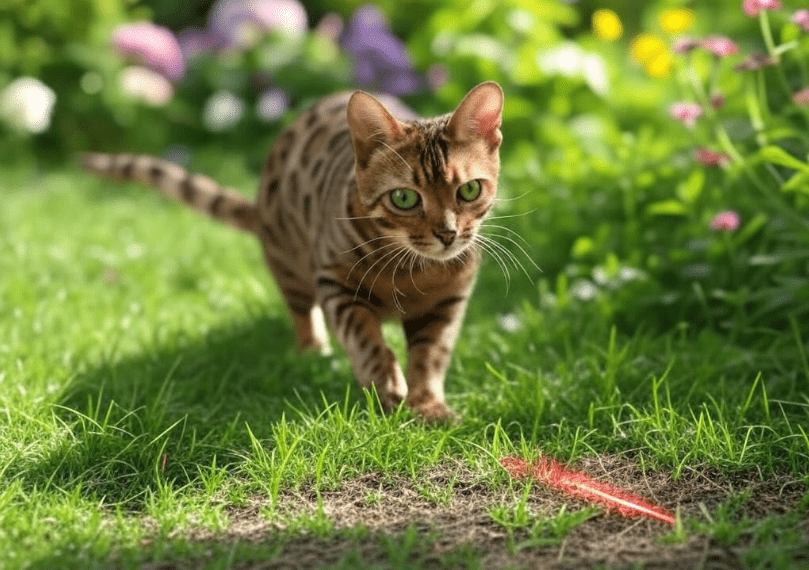
Bengal cats are known for their stunning appearance and lively personalities, but their vocal nature often catches owners by surprise. If you’re wondering, “why does my Bengal cat meow so much?”, you’re not alone. Bengals are naturally more vocal than many other breeds, using meows to communicate a wide range of needs, emotions, and desires. This comprehensive guide will help you decode your Bengal’s vocal behavior, understand the reasons behind excessive meowing, and provide actionable solutions to manage it while strengthening your bond with your feline friend.
Understanding Bengal Cat Vocalization
Cats meow primarily to communicate with humans, and Bengals take this to another level. Their vocalizations are a mix of their wild ancestry and their highly social, intelligent nature. Before diving into solutions, let’s explore why Bengals are so vocal and what their meows might mean.
Bengal Cats: A Naturally Vocal Breed
Bengals are a hybrid breed, descending from the Asian leopard cat, which contributes to their wild, expressive traits. Unlike more reserved domestic breeds, Bengals are chatty and use a variety of sounds—meows, chirps, yowls, and even growls—to express themselves. Their vocal nature is part of their charm but can become overwhelming if not understood or addressed properly.
Common Reasons for Meowing in Cats
Cats meow for various reasons, and Bengals are no exception. Here are some general purposes of feline vocalization:
Attention-Seeking: Cats often meow to get your attention, whether for play, affection, or food.
Greeting: A soft meow can be your Bengal’s way of saying hello when you come home.
Hunger or Thirst: Meowing near their food bowl or water dish often signals they’re hungry or thirsty.
Discomfort or Pain: Persistent meowing can indicate discomfort, pain, or a health issue.
Stress or Anxiety: Changes in the environment or routine can lead to stress-induced vocalization.
Why Bengals Meow More Than Other Cats
Bengals meow more frequently due to their unique characteristics:
High Energy and Intelligence: Bengals are active and intelligent, requiring constant stimulation. If they’re bored, they’ll meow to demand attention or play.
Social Nature: Bengals form strong bonds with their owners and use meowing to engage in “conversation.”
Wild Ancestry: Their Asian leopard cat heritage makes them more vocal, as wild cats use a variety of sounds to communicate in their natural environment.
Decoding Your Bengal’s Meows: What Are They Trying to Say?
To address excessive meowing, you first need to understand what your Bengal is trying to communicate. Different meows can have different meanings, and paying attention to context, tone, and body language can help you decode their messages.
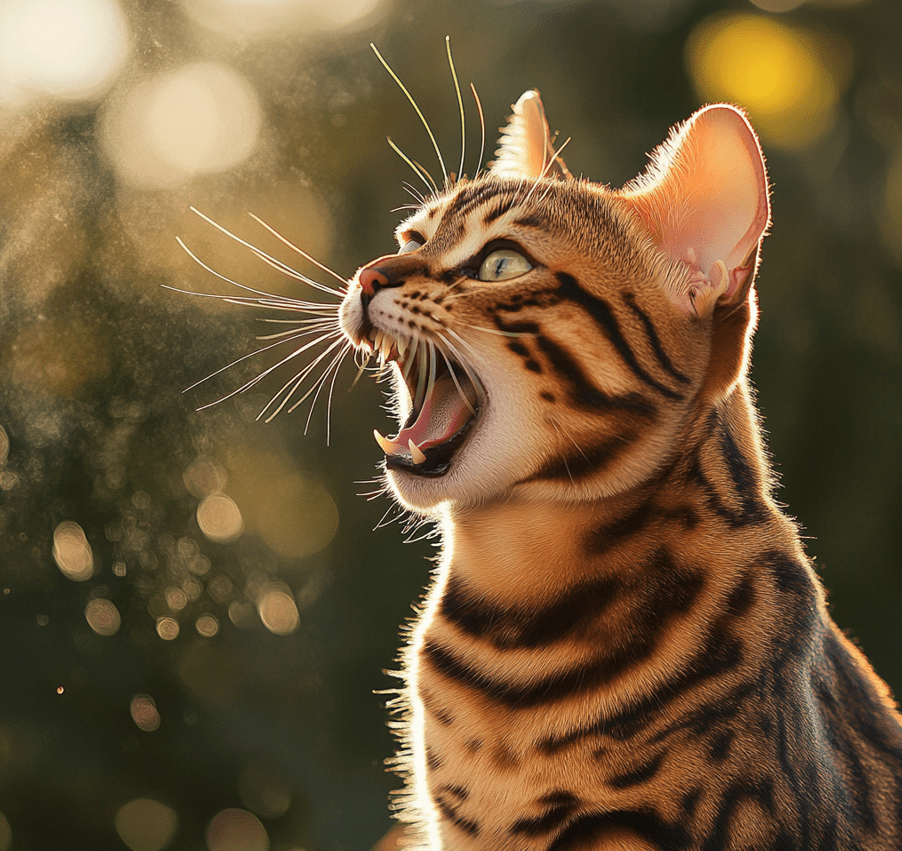
1. Attention and Interaction
Bengals are social and thrive on interaction. If your Bengal meows while staring at you, following you, or pawing at you, they likely want your attention.
Tone: A short, repetitive meow often means “play with me” or “pet me.”
Body Language: Ears forward, tail up, and purring indicate they’re happy and seeking engagement.
Solution: Schedule regular play sessions (20–30 minutes twice daily) with toys like feather wands or laser pointers to satisfy their need for interaction.
2. Hunger or Thirst
If your Bengal meows near their food or water bowl, they’re likely hungry or thirsty. Bengals can be very vocal about their feeding schedule.
Tone: A louder, more insistent meow, often near mealtime.
Body Language: Leading you to their bowl or pawing at it.
Solution: Stick to a consistent feeding schedule and ensure their water is fresh. Avoid giving in to excessive meowing for treats, as this can reinforce the behavior.
3. Boredom or Lack of Stimulation
Bengals are highly intelligent and need mental and physical stimulation. If they’re bored, they’ll meow to express frustration or to demand entertainment.
Tone: A whiny or drawn-out meow, often accompanied by pacing.
Body Language: Restlessness, knocking things over, or excessive scratching.
Solution: Provide enrichment like puzzle toys, cat trees, and window perches. Rotate toys to keep things fresh and engaging.
4. Stress, Anxiety, or Environmental Changes
Bengals are sensitive to changes in their environment, and stress can lead to excessive meowing as a way to express discomfort.
Tone: A low, repetitive meow or yowling, often at odd hours.
Body Language: Hiding, pacing, or dilated pupils.
Solution: Identify and minimize stressors. Use pheromone diffusers like Feliway, maintain a stable routine, and provide a safe space for your Bengal to retreat to.
5. Health Issues or Discomfort
Persistent or unusual meowing can indicate a health problem, especially if it’s a new behavior for your Bengal.
Tone: High-pitched, urgent meows or yowling.
Body Language: Lethargy, changes in appetite, or litter box issues.
Solution: Schedule a vet visit to rule out medical issues like urinary problems, dental pain, or hyperthyroidism, which are common in cats and can cause vocalization.
6. Mating Behavior (If Not Spayed/Neutered)
Unspayed or unneutered Bengals may meow excessively when they’re in heat or seeking a mate.
Tone: Loud, persistent yowling, especially at night.
Body Language: Restlessness, rubbing against objects, or trying to escape.
Solution: Spay or neuter your Bengal to reduce hormonal-driven vocalization and prevent unwanted behaviors.
How to Manage Excessive Meowing in Bengal Cats
Once you’ve identified the reason behind your Bengal’s meowing, you can take steps to manage it. Here’s a detailed plan to address the question, “why does my Bengal cat meow so much?”, and reduce excessive vocalization.
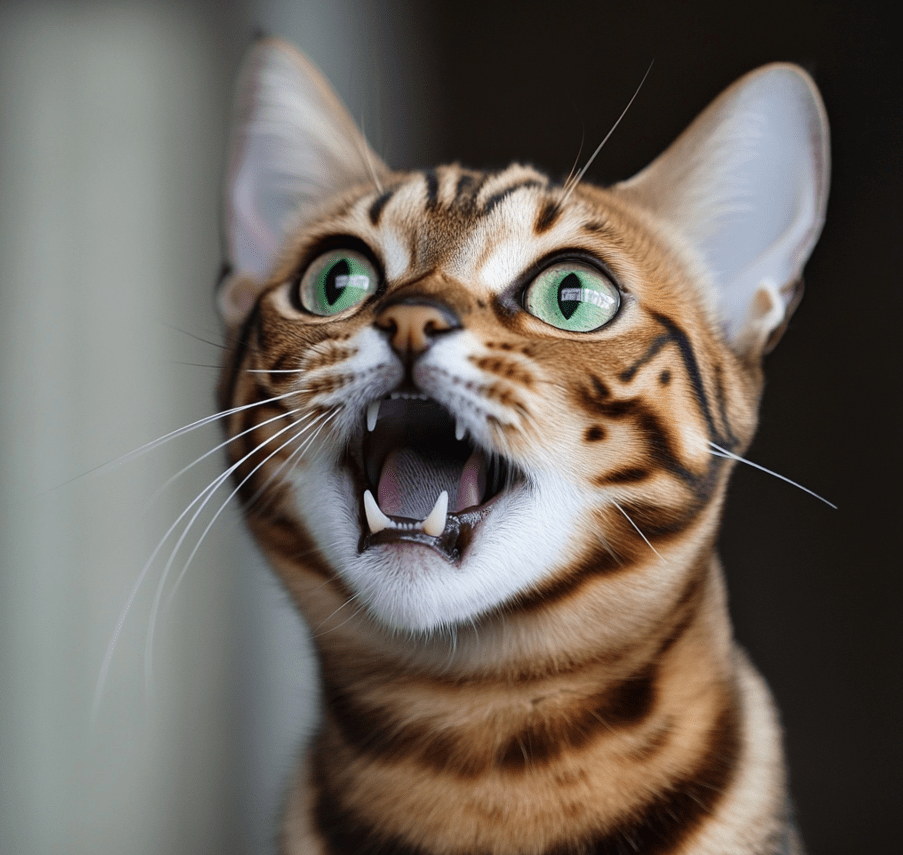
1. Meet Their Basic Needs
Ensure your Bengal’s basic needs are met to prevent meowing due to hunger, thirst, or discomfort.
Feeding Schedule: Feed your Bengal at the same times each day to create predictability. Bengals thrive on high-protein diets, so ensure their food meets their nutritional needs.
Fresh Water: Keep their water bowl clean and filled. Some Bengals prefer running water, so consider a cat water fountain.
Litter Box Maintenance: A dirty litter box can cause stress and lead to meowing. Scoop daily and provide one more litter box than the number of cats in your home (e.g., two boxes for one cat).
2. Provide Ample Stimulation and Enrichment
Bengals need more stimulation than most cats due to their high energy and intelligence. Keeping them engaged can reduce meowing caused by boredom.
Physical Activity
Interactive Play: Engage your Bengal with toys that mimic prey, like feather wands or toy mice. Aim for at least two 20–30-minute play sessions daily.
Climbing Opportunities: Install cat trees, shelves, or window perches to satisfy their love for vertical spaces.
Outdoor Access (Safely): If possible, create a secure outdoor space (like a catio) or leash-train your Bengal for supervised walks to burn off energy.
Mental Stimulation
Puzzle Toys: Use treat-dispensing toys or food puzzles to challenge their mind.
Training: Teach your Bengal tricks like “sit,” “fetch,” or walking on a leash. Bengals are highly trainable and enjoy learning.
Environmental Enrichment: Place bird feeders outside windows for your Bengal to watch, or play cat-specific music or videos to keep them entertained.
3. Address Stress and Anxiety
If your Bengal’s meowing is stress-related, take steps to create a calm environment.
Stable Routine: Maintain consistent feeding, play, and sleep schedules to provide security.
Minimize Changes: Introduce new pets, people, or furniture gradually. Use pheromone diffusers like Feliway to help your Bengal adjust.
Safe Spaces: Provide hiding spots or cozy beds where your Bengal can retreat if they feel overwhelmed.
4. Reinforce Quiet Behavior
While you can’t stop your Bengal from meowing entirely, you can encourage quieter behavior through positive reinforcement.
Ignore Attention-Seeking Meows: If your Bengal meows for attention, wait until they’re quiet before responding. Reward them with attention or treats when they stop meowing.
Avoid Reinforcing Bad Habits: Don’t give in to meowing for food or play outside of scheduled times, as this can reinforce the behavior.
Clicker Training: Use a clicker to reward quiet behavior, helping your Bengal learn that silence leads to positive outcomes.
5. Rule Out Health Issues
If your Bengal’s meowing is sudden, excessive, or accompanied by other symptoms, a health issue may be the cause.
Vet Checkup: Schedule a vet visit to check for underlying conditions like hyperthyroidism, urinary tract issues, or dental problems.
Monitor Symptoms: Look for signs like lethargy, changes in appetite, or litter box issues, and report these to your vet.
Senior Bengals: Older Bengals may meow more due to cognitive decline or age-related discomfort. Regular vet checkups (twice yearly for seniors) can help manage these issues.
6. Spay or Neuter Your Bengal
If your Bengal isn’t spayed or neutered, hormonal behavior can lead to excessive meowing, especially during mating seasons.
Benefits of Spaying/Neutering: This reduces hormonal-driven vocalization, prevents unwanted litters, and lowers the risk of certain health issues.
Timing: Spay or neuter your Bengal before they reach sexual maturity (around 5–6 months) for the best results.
Common Mistakes to Avoid When Addressing Bengal Cat Meowing
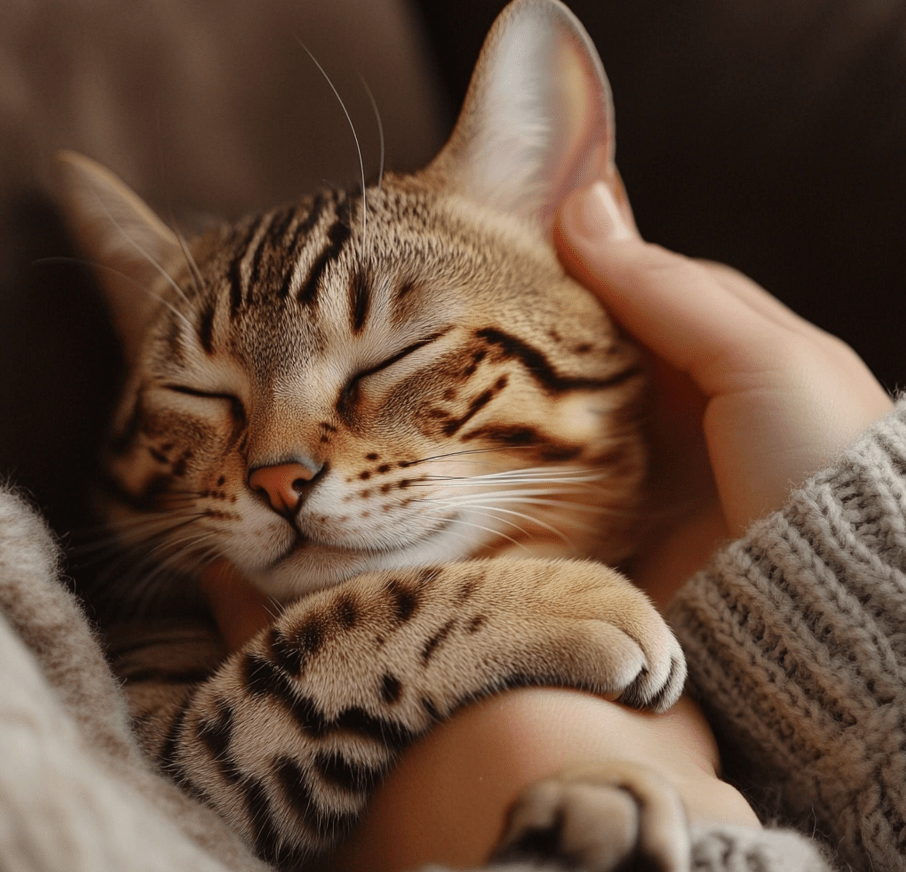
When trying to manage your Bengal’s vocalization, avoid these common pitfalls that can worsen the behavior or harm your relationship with your cat:
Punishing Meowing: Yelling, spraying water, or other punishments can stress your Bengal and increase meowing. Focus on positive reinforcement instead.
Ignoring Underlying Issues: If your Bengal’s meowing persists, don’t dismiss it as “normal.” It could indicate a health or emotional problem that needs attention.
Inconsistent Responses: Responding to meowing sometimes and ignoring it other times can confuse your Bengal. Be consistent in your approach.
Not Providing Enough Stimulation: Bengals need more activity than most cats. Failing to meet their physical and mental needs can lead to excessive meowing.
Additional Tips for Bengal Cat Owners
Here are some extra tips to help you manage your Bengal’s vocal behavior and strengthen your bond:
Learn Their Unique Meows
Every Bengal has a distinct “vocabulary.” Spend time observing your cat to learn the difference between their hungry meow, playful meow, and stressed meow. This can help you respond more effectively.
Create a Routine
Bengals thrive on predictability. A consistent daily routine for feeding, play, and sleep can reduce stress-related meowing and help your cat feel secure.
Use Soothing Techniques
If your Bengal meows due to stress, try calming techniques like playing soft music, offering a warm bed, or using pheromone diffusers to create a relaxing environment.
Monitor for Changes
If your Bengal’s meowing habits change suddenly—either becoming more frequent or stopping altogether—it could indicate a health or emotional issue. Keep a log of their behavior and consult your vet if needed.
Conclusion
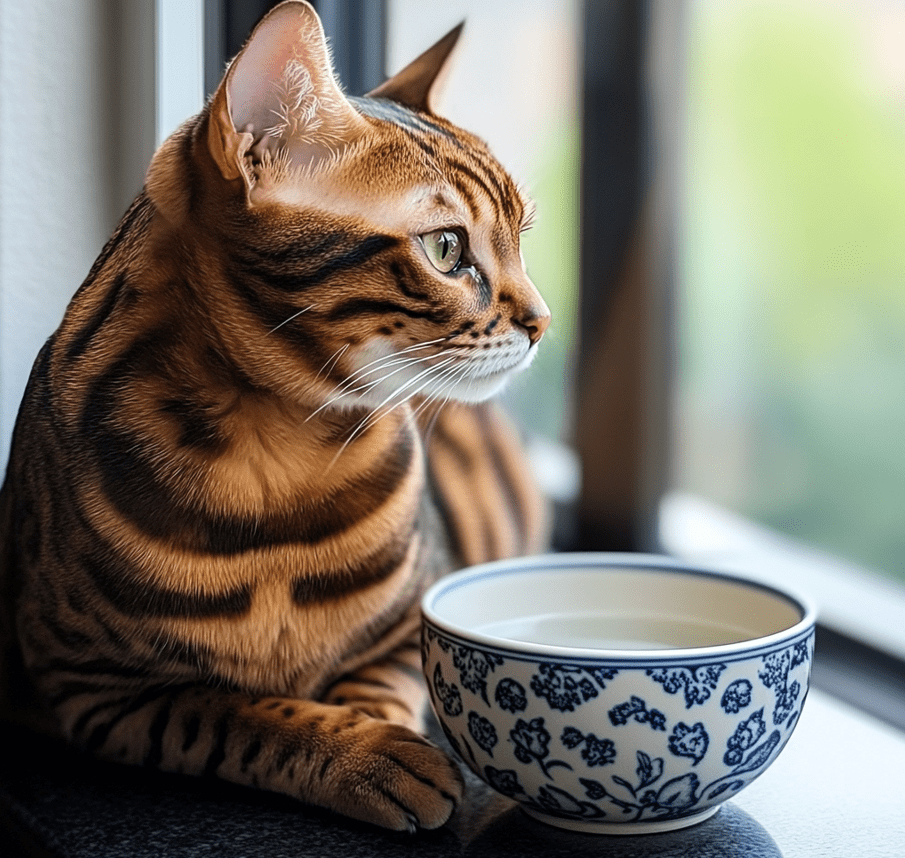
Understanding why your Bengal cat meows so much is the first step to managing their vocal behavior. Bengals are naturally chatty due to their wild ancestry, high energy, and social nature, but excessive meowing can also signal unmet needs, stress, or health issues. By decoding their meows, providing ample stimulation, addressing stress, and ruling out medical problems, you can reduce excessive vocalization while keeping your Bengal happy and healthy. With patience and consistency, you’ll not only manage their meowing but also deepen your bond with your vocal feline companion.
For more Bengal cat care tips or to consult a feline behaviorist, reach out to your local vet or cat community. Your Bengal’s meows are their way of talking to you—listen closely, and you’ll both thrive!

